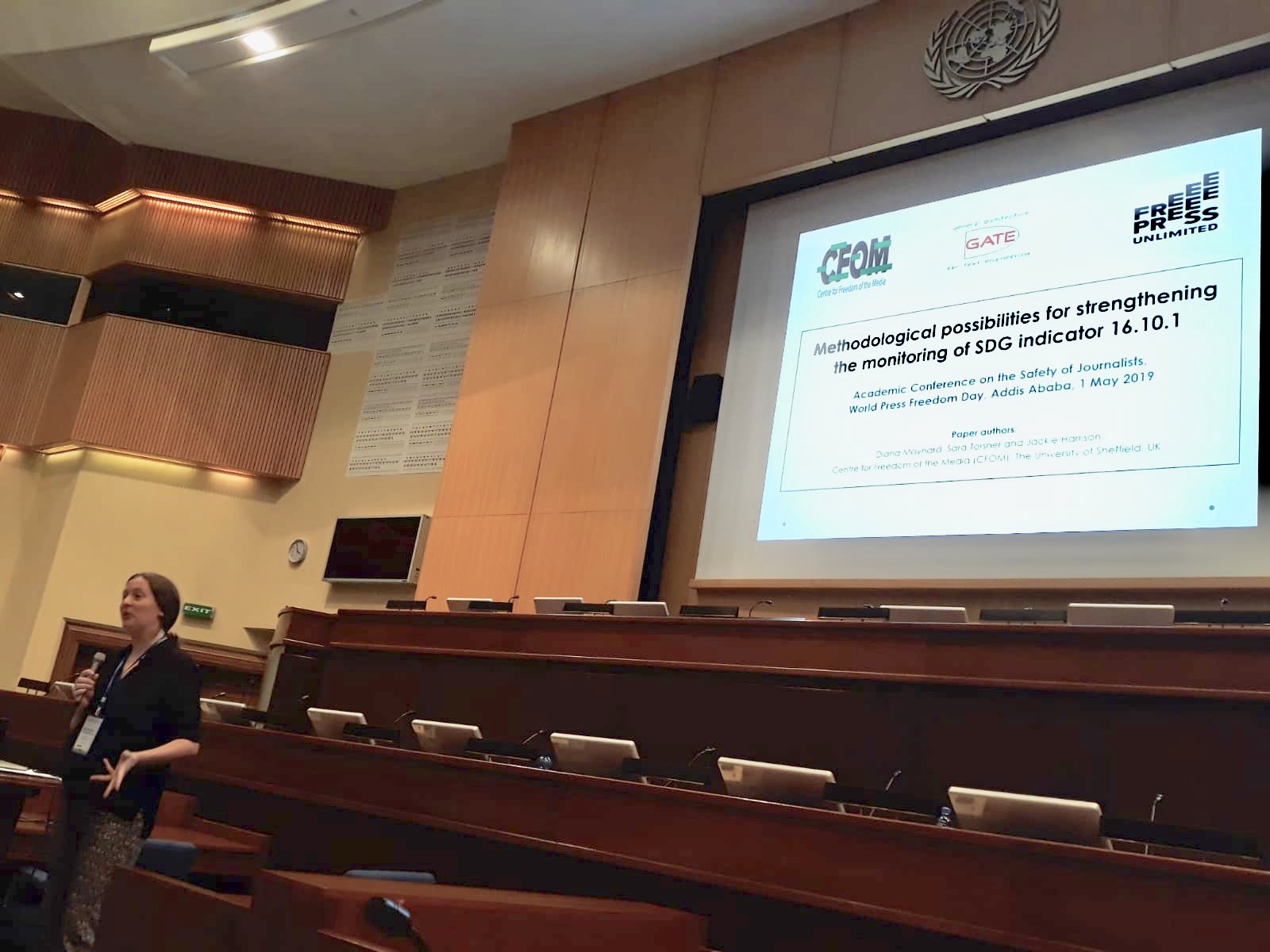Our CFOM members Diana Maynard, Sara Torsner and Jackie Harrison presented their ongoing research that aims to facilitate the comprehensive monitoring of violations against journalists in line with Sustainable Development Goal (SDG) 16.10.1 at the World Press Freedom Day Academic Conference on the Safety of journalists in Addis Ababa, Ethiopia on May 1st, 2019.
The research is part of a collaborative project between CFOM and the press freedom organisation Free Press Unlimited that aims to develop a methodology for systematic data collection on a range of attacks on journalists.
Presenting the research background, Sara Torsner explained that ‘we currently lack a comprehensive monitoring method that can be used to realise the monitoring agenda proposed by SDG indicator 16.10.1’ and ‘are therefore confronted with fundamental methodological challenges’. She explained that the two main problems are the accessibility of reliable information on a range of abuses and the lack of the categorisation and systematisation of it.
While current databases mostly record journalist killings, as the most serious form of censorship, the CFOM team pointed out that the monitoring scope ‘must be widened to include the full range of physical and non-physical attacks perpetrated against journalists’. Not least since ‘focusing predominantly on the most egregious form of violence as represented by killings could lead to other types of violations being underrepresented, resulting in a miscounting that could bias analytical assessments’.
Discussing possibilities for adopting computerised natural language processing tools for the purpose of developing a monitoring infrastructure that allows for the systematisation and organising of a range of information and data sources related to violations against journalists Diana Maynard proposed a set of areas of research that aim to explore this in more depth.

Whereas approaches to monitoring violations against journalists traditionally uses a person-based approach, recording information centred around an individual, Diana Maynard suggested that adopting an events-based methodology instead allows for the violation itself to be placed at the centre: ‘by enabling the contextualising and recording of in-depth information related to a single instance of violence such as a killing, including information about key actors and their interrelationship (victim, perpetrator and witness of a violation), the events-based approach enables the modelling of the highly complex structure of a violation. It also allows for the recording of the progression of subsequent violations as well as multiple violations experienced by the same victim (e.g. detention, torture and killing)’.
Another area of research includes possibilities for reconciling information from different databases and sources of information on violations against journalists through computerised techniques. Such methods would allow for the assessment and compilation of partial and contradictory data about the elements constituting a given attack on a journalist. ‘By creating a central categorisation scheme we would essentially be able to facilitate the mapping and pooling of data from various sources into one data source, thus creating a monitoring infrastructure for SDG 16.10.1’, said Diana Maynard. Systematic data on a range of violations against journalists that are gathered in a methodologically systematic and transparent way would also be able to address issues of information validity and source verification: ‘Ultimately such data would facilitate the investigation of patterns, trends and early warnings, leading to a better understanding of the contexts in which threats to journalists can escalate into a killing undertaken with impunity’, Diana Maynard concluded.
For access to presentation slides please click here.

